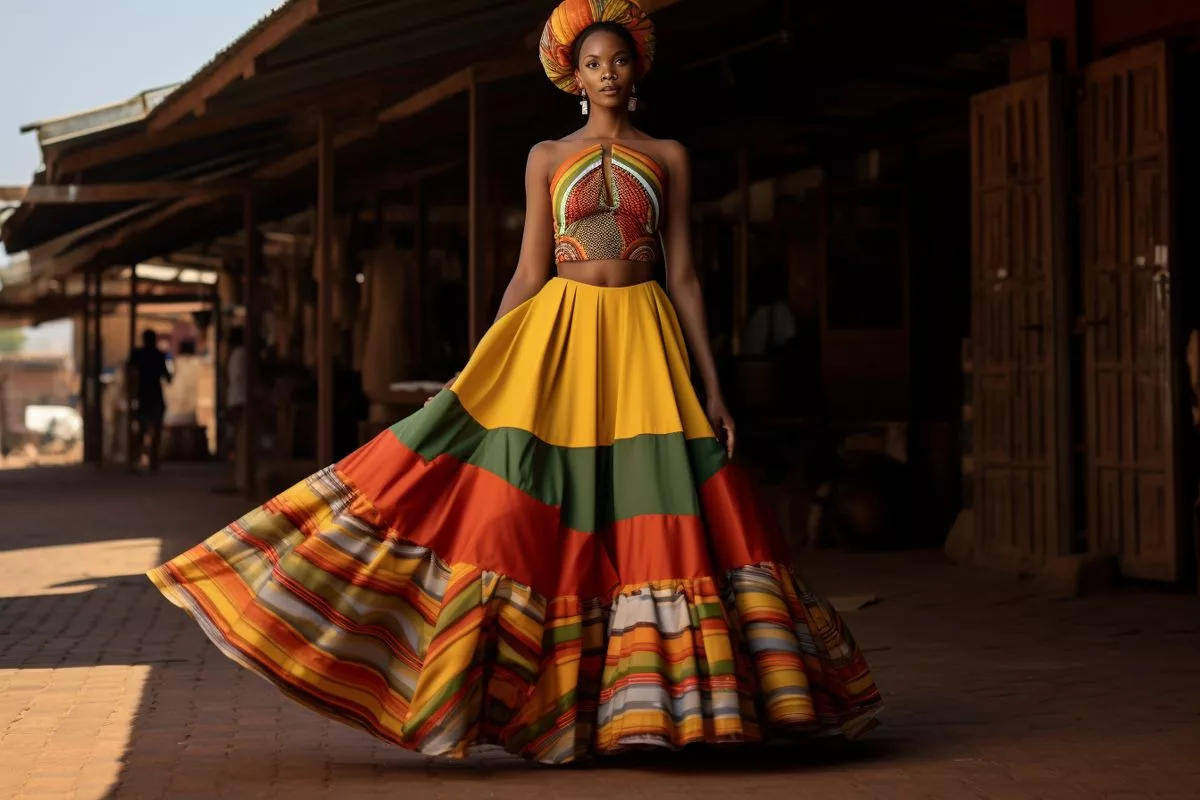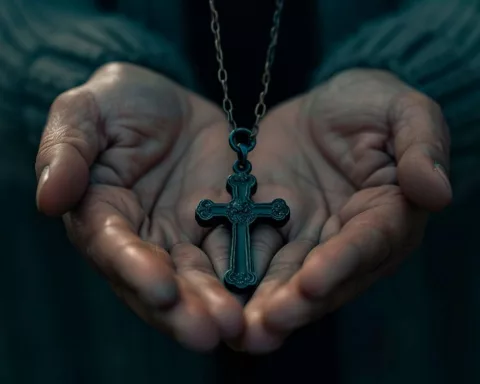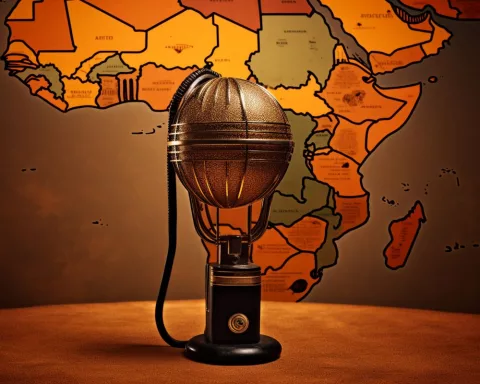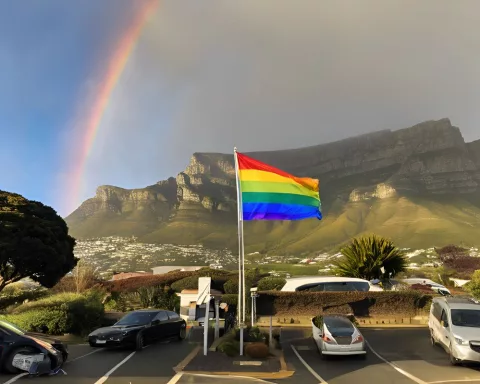Sho Madjozi is a unique gem among young South African performers, delivering her art in Xitsonga and integrating traditional clothing and dance into her performances. Her music transcends geographical confines, as seen with her chart-topping track “John Cena”, and she is a trendsetter, reimagining Tsonga costumes, hairstyles, and dance routines in a creative way. Her work initiates a dialogue between the past and present, tradition and modernity, and local versus global dynamics, promoting cultural exchange and dialogue.
Sho Madjozi: A Unique Gem Among Young South African Performers.
A Singular Talent on the Global Stage
Sho Madjozi, a celebrated South African rapper, has made her mark in the pop culture sphere not merely through her catchy tunes and charming lyrics, but also through her unique method of integrating traditional clothing and dance into her performances. As an actress and poet, she is a unique gem among young South African performers, delivering her art in Xitsonga, a language spoken by a small percentage of South Africa’s populace, mostly concentrated in the country’s rural northern province of Limpopo. The Tsonga people also reside in neighboring countries like Mozambique, Zimbabwe, and Eswatini.
Yet Sho Madjozi’s music transcends the geographical confines of the Xitsonga-speaking populace. In 2019, the self-dubbed “village girl” made a splash across the globe with her chart-topping track “John Cena”, bagging a BET award for Best International Newcomer. By 2021, she rose to the zenith of her profession, earning the award for best female artist at the South African Music Awards.
More than Just a Musician
Sho Madjozi is not just a musical sensation, but also a trendsetter, reimagining Tsonga costumes, hairstyles, and dance routines in a creative way. She has influenced the cultural identity of her region through her work, showcasing how cultural identities can evolve, adapt, and fuse with elements of popular global culture over time. This fusion of authenticity and global influence has given birth to a unique brand of identity and performance style.
Born Maya Christinah Xichavo Wegerif, Sho Madjozi’s cultural heritage further intensifies the notions of authenticity and hybridity in her work. A daughter to a Swedish father and Tsonga mother, her mixed heritage exemplifies the merging of diverse cultural narratives, standing as a beacon of interracial love in a country that has a history of suppressing indigenous cultures and enforcing racial segregation.
Sho Madjozi’s diverse cultural background, which also includes spending significant time in Senegal during her formative years, exemplifies the fluid and interconnected identity of today’s “Afropolitans,” individuals who encapsulate both African and cosmopolitan identities. While her music career has blossomed, she has opted to maintain a distinctive Tsonga artistic style. Amid an era where traditional cultural values are frequently eclipsed by rapid globalisation, Sho Madjozi’s work initiates a dialogue between the past and present, tradition and modernity, and local versus global dynamics.
Infusion of Traditional Tsonga elements
Sho Madjozi’s performances are infused with traditional Tsonga clothing and dance, offering a vibrant and dynamic representation of Tsonga culture. She has innovatively revamped the traditional Tsonga Tinguvu skirt, turning it into a contemporary fashion symbol. This skirt, typically utilized in the Xibelani dance, is recognized for its abundant fabric layers that create a unique silhouette when danced in. Sho Madjozi also integrates the vivid colors typically linked with Tsonga culture into her outfits and hairstyles, ingeniously blending indigenous culture with contemporary fashion trends.
Her reinterpretation of the Xibelani dance, a traditional Tsonga dance usually performed by women on special occasions, is equally captivating. The dance involves rhythmic hip shaking, which is amplified by the volume of Xibelani skirt, along with hand clapping and whistling. Through her music and performances, Sho Madjozi has brought the Tsonga Xibelani culture into the urban South African youth mainstream, showcasing the coexistence of tradition and modernity.
Sho Madjozi’s approach is more than just a celebration of her cultural heritage, it’s also a challenge to conventional ideas of cultural preservation. She illustrates Tsonga tradition and culture as flexible and adaptable, rather than static or unchanging. Through her music, performances and public image, she motivates young South Africans to tap into their cultural roots as they maneuver their identities in a progressively globalized world. Bridging the gap between tradition and modernity, Sho Madjozi is a cultural ambassador, promoting pride in one’s heritage while fostering cultural exchange and dialogue.
Her work embodies the sentiments of Taiye Selasi, a UK-born writer, photographer, and cultural activist of Nigerian and Ghanaian heritage, who claimed, “What distinguishes (Afropolitans) is a willingness to complicate Africa.” Sho Madjozi exemplifies this perfectly. Through her music and performances, she respects Africa’s intellectual and spiritual legacy while underscoring its cultural complexity. She stresses the importance of cultural preservation while also illustrating its potential for creative reinvention — a testament to the dynamic, evolving, and rich tapestry that is African culture.
1. Who is Sho Madjozi?
Sho Madjozi is a South African rapper, actress, and poet who delivers her art in Xitsonga, a language spoken by a small percentage of South Africa’s populace. She is known for integrating traditional clothing and dance into her performances, showcasing the fusion of authenticity and global influence.
2. What is the significance of Sho Madjozi’s cultural heritage?
Sho Madjozi’s cultural heritage exemplifies the merging of diverse cultural narratives, standing as a beacon of interracial love in a country that has a history of suppressing indigenous cultures and enforcing racial segregation. Her mixed heritage also exemplifies the fluid and interconnected identity of today’s “Afropolitans,” individuals who encapsulate both African and cosmopolitan identities.
3. What is the Xitsonga culture?
The Xitsonga people reside mostly in South Africa’s rural northern province of Limpopo, as well as in neighboring countries like Mozambique, Zimbabwe, and Eswatini. The Tsonga culture refers to the cultural identity of the Xitsonga people, with traditional clothing and dance being significant components.
4. What traditional Tsonga elements does Sho Madjozi incorporate into her performances?
Sho Madjozi’s performances are infused with traditional Tsonga clothing and dance, offering a vibrant and dynamic representation of Tsonga culture. She has innovatively revamped the traditional Tsonga Tinguvu skirt, turning it into a contemporary fashion symbol. She also integrates the vivid colors typically linked with Tsonga culture into her outfits and hairstyles, ingeniously blending indigenous culture with contemporary fashion trends.
5. What is the Xibelani dance?
The Xibelani dance is a traditional Tsonga dance usually performed by women on special occasions. It involves rhythmic hip shaking, which is amplified by the volume of Xibelani skirt, along with hand clapping and whistling.
6. What is the significance of Sho Madjozi’s work?
Through her music and performances, Sho Madjozi initiates a dialogue between past and present, tradition and modernity, and local versus global dynamics. She promotes cultural exchange and dialogue while illustrating Tsonga tradition and culture as flexible and adaptable, rather than static or unchanging. Her work inspires young South Africans to tap into their cultural roots as they maneuver their identities in a progressively globalized world.












